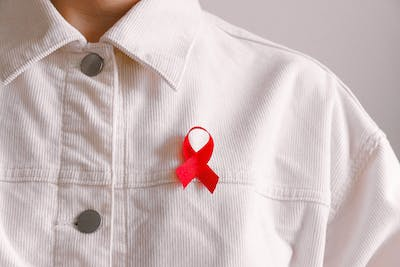Jakarta: Human immunodeficiency virus (HIV) is a type of virus that infects white blood cells causing a decrease in human immunity. HIV that is not treated immediately will develop into a serious condition called AIDS (acquired immune deficiency syndrome).
AIDS is the final stage of HIV infection. AIDS it is also a collection of symptoms that arise due to decreased immunity caused by HIV infection. At this stage, the body’s ability to fight infection is completely lost.
Symptoms of HIV and AIDS
Most sufferers experience a mild cold 2-6 weeks after HIV infection. The flu can be accompanied by other symptoms and can last 1-2 weeks. After the flu has improved, other symptoms may not be seen for years even as the HIV virus continues to damage the sufferer’s immune system, until the HIV develops into an advanced stage into AIDS.
In most cases, a person only discovers they have HIV after seeing a doctor due to a serious illness caused by a weakened immune system. The serious disease involved includes chronic diarrhea, pneumonia, or cerebral toxoplasmosis.
Causes and risk factors of HIV and AIDS
Quoted from p World Health Organizationn (WHO) and alodokter, HIV can be transmitted through the exchange of various body fluids from an infected person, such as blood, breast milk (breast milk), semen and vaginal fluids.
What do you think of this article?
HIV can also be passed from a mother to her child during pregnancy and childbirth. People cannot become infected through daily contact such as kissing, hugging, shaking hands or sharing personal items, food or water.
Several factors that can increase the risk of transmission are as follows:
- Having sex with multiple partners and without using protection.
- Using needles together.
- Carrying out work that involves contact with human body fluids without the use of adequate personal protective equipment
Prevention of HIV and AIDS
Quoted from the page Kemkes.go.idThe way to avoid transmission of HIV is known as the “ABCDE” concept, i.e.:
- A (Abstinence): means absence of sex or not having sex for those who are not married.
- B (Be Faithful): means to be mutually faithful to a sexual partner or not to change partners.
- C (Condom): Means Preventing the transmission of HIV through sexual intercourse by using a condom.
- D (Drug No): means the use of drugs is prohibited.
- E (Education): indicates the offer of education and correct information on HIV, its methods of transmission, prevention and treatment.
Treatment of HIV and AIDS
While there is no medicine to treat HIV as yet, there are types of medicines that can slow down the development of the virus. This type of drug is called an antiretroviral (ARV).
ARVs work by removing elements needed for the HIV virus to reproduce and prevent the HIV virus from destroying CD4 cells. There are various types of ARV drugs, including Etravirine, Efavirenz, Lamivudin, Zidovudin, and also Nevirapine.
While you are taking antiretroviral drugs, your doctor will monitor your virus and CD4 cell counts to assess your response to treatment. CD4 cell counts will be done every 3-6 months. Meanwhile, HIV RNA testing was performed from initiation of treatment, then continued every 3 to 4 months during the treatment period.
(PALE)


